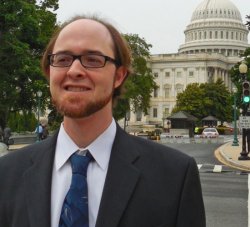
University Calendar
Novel computational approaches to chemical tool discovery for Mycobacterium tuberculosis

Alexander Luke Perryman, PhD, Research Teaching Specialist III Rutgers University-NJ Medical School
The Perryman Lab
Seeks to create a computationally-driven chemical biology lab that advances research against drug-resistant infectious diseases. Our primary focus will be TB, but we will also help in the fight against malaria and the ESKAPE pathogens. We will mainly study targets involved in Mycobacterium tuberculosis cell wall synthesis and remodeling, starting with Mtb FabG1 (MabA, part of the FAS II pathway that synthesizes mycolic acids) and Mtb D-Ala:D-Ala ligase (Ddl, which synthesizes a key component of peptidoglycans). Both of these targets are known to be essential to Mtb growth, but no published screens have been performed against either target. We will:
- create, improve, validate, and hone machine learning models (ligand-based Bayesian models that can be trained with cellular data)
- combine Bayesian models with docking, pharmacophores, and/or Molecular Dynamics
- develop novel workflows that harness the strengths of cell-based, ligand-based and target-based approaches, while minimizing the weaknesses that can occur when these techniques are performed in isolation.
- increase the accuracy and efficiency of chemical tool discovery
- help advance translational research in many therapeutic areas
- lay the foundation for future drug discovery efforts.
The new in silico tools we create and the novel workflows that will incorporate them will be informed by our enzyme and cell-based in vitro evaluation of the candidates we discover computationally, as well as by in vitro and in vivo experiments performed by our collaborators, which will help us validate our models with prospective predictions. Simultaneously, applying and then re-training these models with new experimental data from our lab and from collaborations in hit discovery, hit-to-lead optimization, and lead development research will give us the opportunity to improve our tools and to help advance the research performed throughout the department and the entire drug discovery community.
Presentation Abstract
Mycobacterium tuberculosis (Mtb), the pathogen that causes TB, is the deadliest bacterium on Earth. The global treatment success rates are < 50%, which is part of the reason why ~1.5 million people die of TB each year. Multi-drug resistant (MDR), extensively-drug resistant (XDR), and even totally-drug resistant (TDR) strains of Mtb keep increasing in frequency and in global distribution. Consequently, new drugs to treat Mtb infections in novel ways are an urgent public health necessity. To increase the efficiency and accuracy of discovering novel chemical tools that can (a) facilitate studies of the fundamental biology of Mtb and (b) lay the foundation for the discovery and development of new drugs to treat MDR, XDR, and TDR-TB, we are creating, honing, and applying novel computational tools and workflows. Useful chemical tools need to display several critical properties, such as: in vitro activity against whole-cell Mtb, lack of toxicity to mammalian cells, inhibition of an essential and vulnerable drug target(s), metabolic stability, solubility, bioavailability, and in vivo activity in animal models of infection. We are (1) developing machine learning models and (2) combining them with each other and with other computational techniques, followed by (3) prospective predictions and (4) experimental validation, to help overcome each of the hurdles that a compound must pass before it can become either a useful chemical tool against Mtb or a drug “lead” against TB. Our novel approaches, and many of the specific Bayesian models that we develop, could also be applied to help advance translational research against other types of diseases.